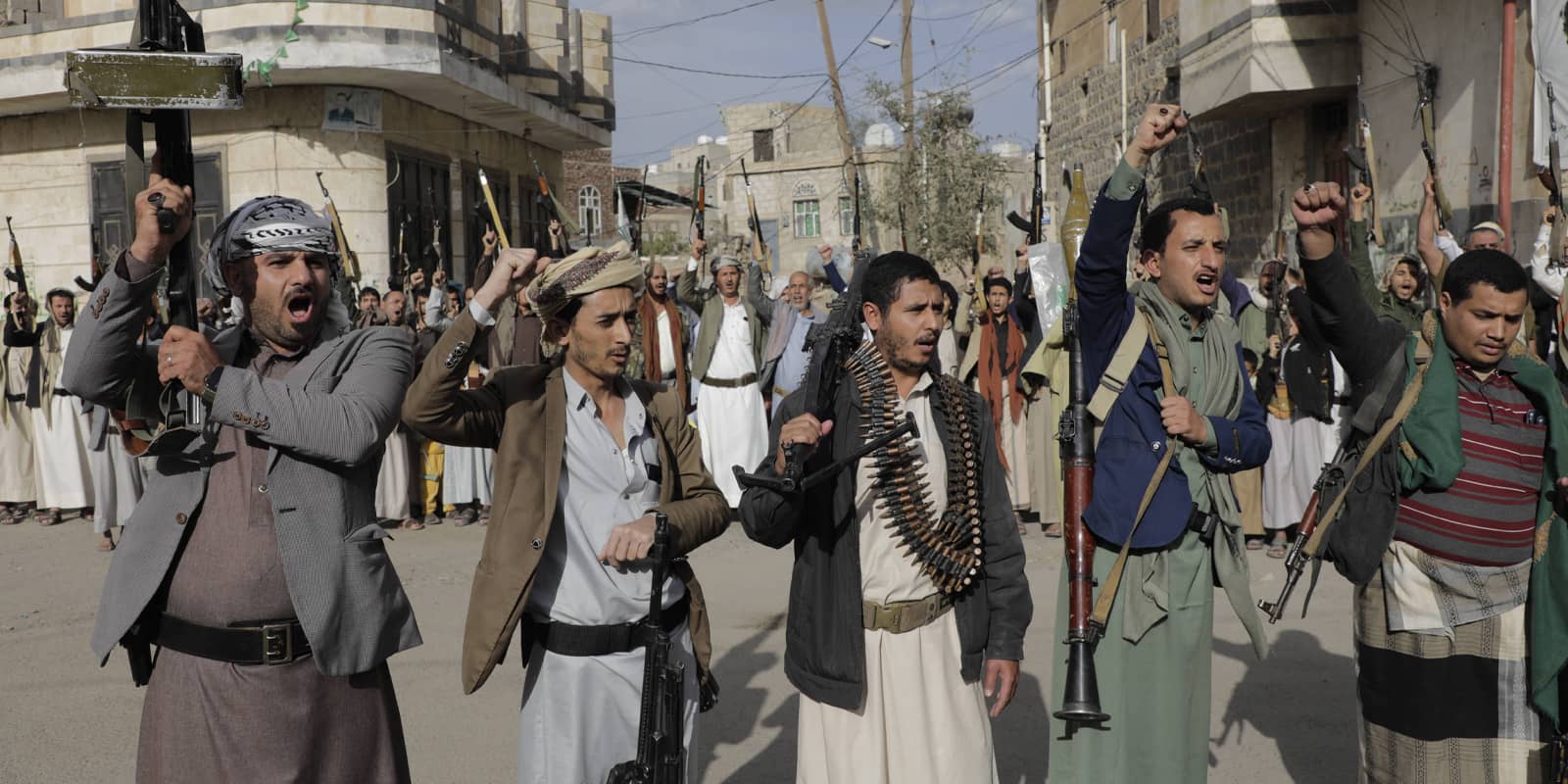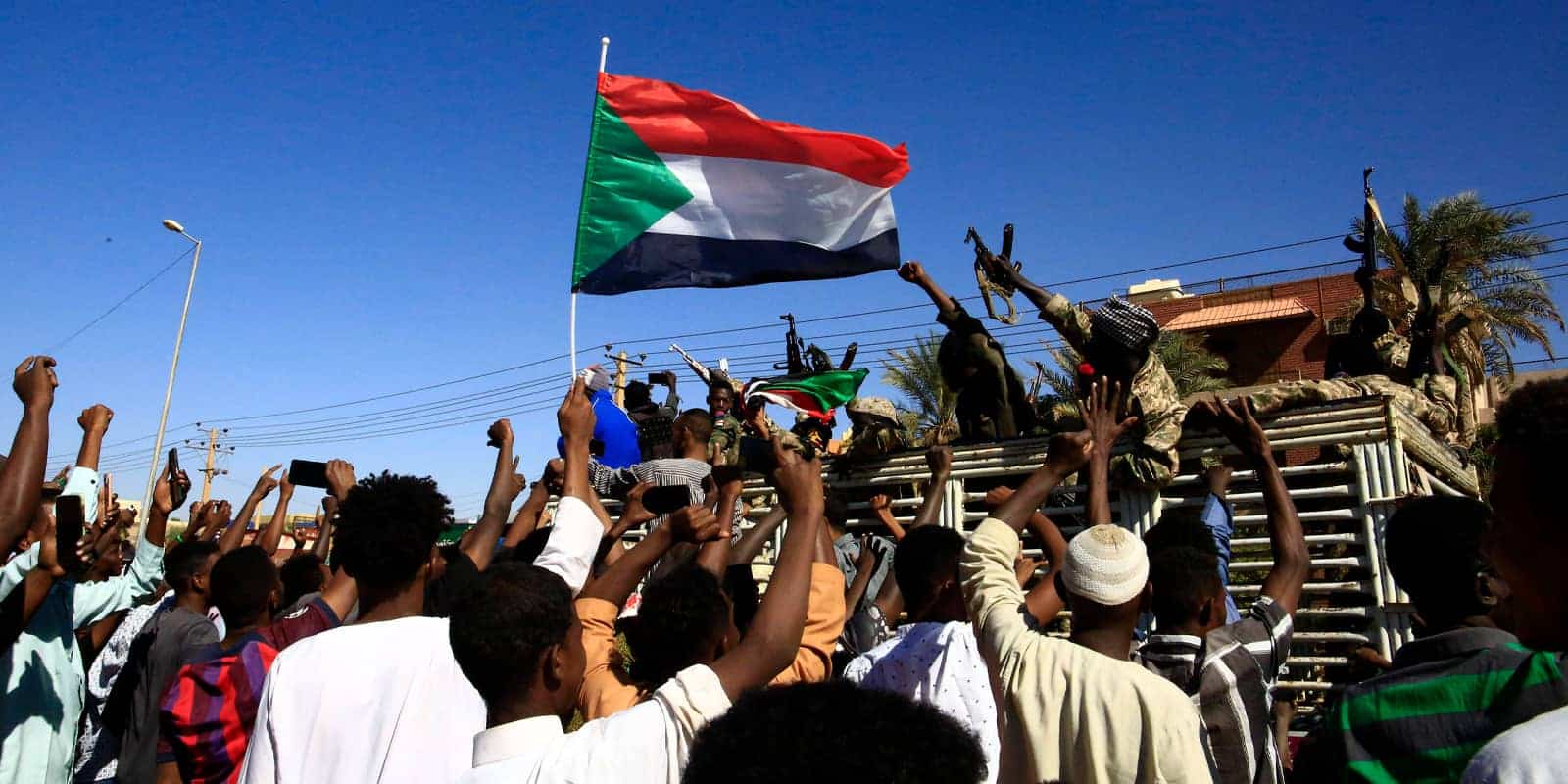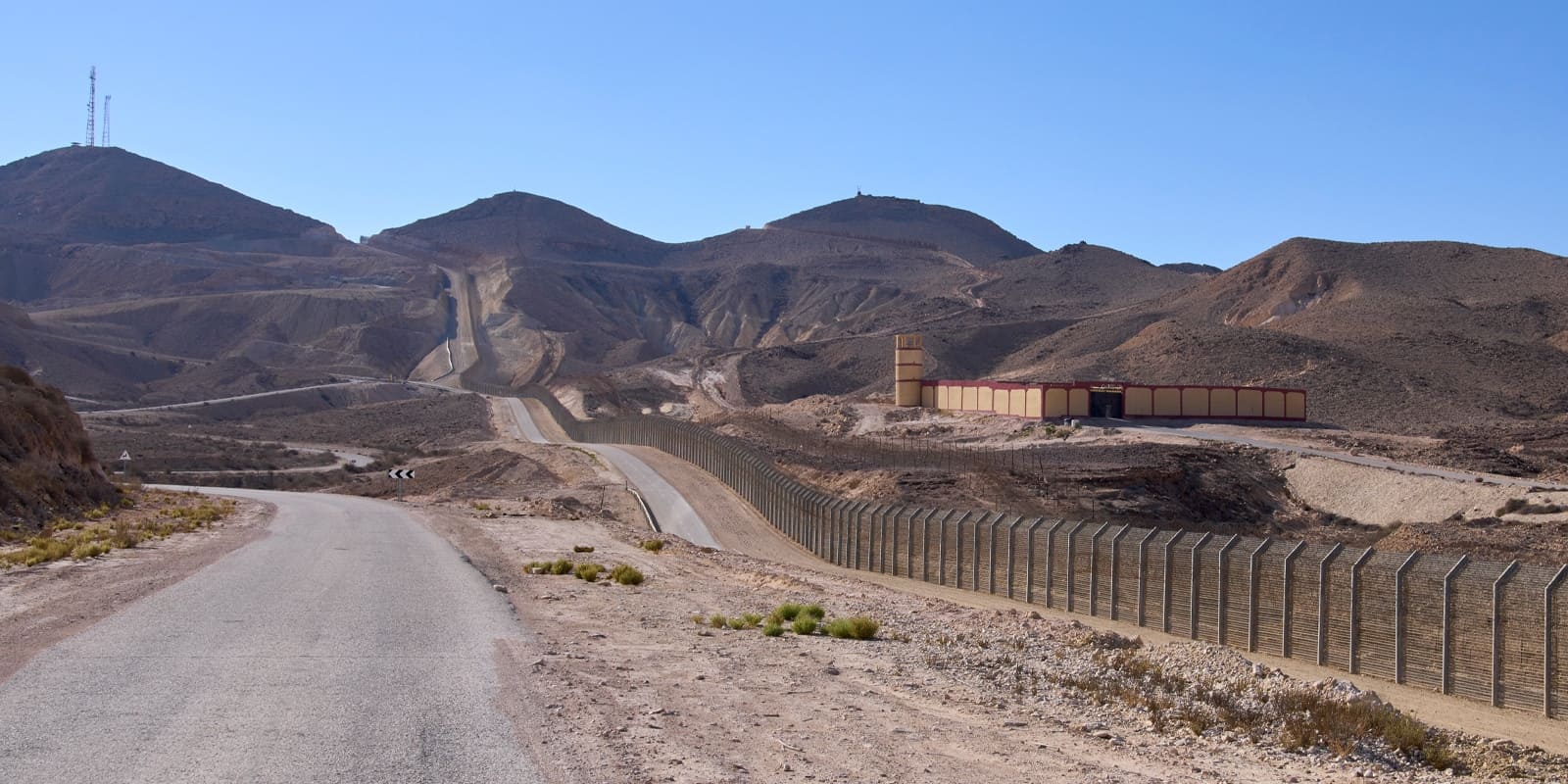Synopsis
Ballistic missiles first appeared in Yemen in the 1980s, when North and South Yemen acquired ballistic missiles from the Soviet Union. The country’s missile stockpile, unified after a brief civil war, fell into the hands of the Houthis—an extremist Islamist movement—when it seized power in the capital, Sana’a, in 2015. In the seven-year war between the Houthi regime and Saudi Arabia and its allies, the Houthis attacked Saudi Arabia and the United Arab Emirates with missiles and drones supplied by Iran. The Iranians also provided them with expertise and facilities for the self-manufacture of missiles and drones. Already during the war with Saudi Arabia, the Houthis declared that their missiles would one day be directed at Israel, and indeed, after the outbreak of the Swords of Iron War, they began a missile and drone campaign that still goes on at the time of writing. Israel’s options for suppressing the Houthis’ ability to produce and launch missiles are extremely limited, and this fire will likely continue until a technological or political solution is found to stop it.
The Evolution of the Houthi Threat to Israel
Until recently, Yemen was perceived in the average Israeli mind as a remote country lying beyond the rivers of oblivion, whose contribution to Israeli discourse was linked to immigration from Yemen, Yemeni cuisine, and Yemeni folk dances. Since the beginning of the Swords of Iron War, there has been a fundamental change in this perception: Houthi Yemen has emerged as a significant enemy state, currently imposing a naval blockade on the port of Eilat and launching ballistic missiles and drones at Israel almost daily. Although the physical damage from these missiles has been negligible so far, the economic and image damage has been significant, exemplified by a single ballistic missile strike that impacted harmlessly in an orange grove within the perimeter of Ben-Gurion Airport, yet caused most international airlines to suspend flights to and from Israel.
The emergence of the missile threat from Yemen should not have come as a shock. Those who diligently followed political developments in the southern Arabian Peninsula had been aware for many years of the appearance of ballistic and cruise missiles in this remote region. When the British left their crown colony in Aden in southern Yemen in 1967, the country was effectively divided into two hostile states: North Yemen (Yemen Arab Republic), and South Yemen, ruled by a Marxist movement. The two countries vigorously armed against each other, and both received assistance from the Soviet Union—including the supply of ballistic missiles.
After a short-lived unification in 1990, Yemen split again into two hostile states. In the war that broke out between them in 1994, South Yemen rained Scud missiles on the northern capital, Sana’a, and North Yemen launched short-range SS-21 missiles at the southern capital, Aden. North Yemen’s victory in this war led to the reunification of the country. The missile arsenals of South and North Yemen were merged and put on display by the Yemeni government in the capital, Sana’a.
In 2004, the Yemeni Houthi movement—an extremist Islamist movement with a distinct antisemitic tone—launched a rebellion against the pro-Western government that ruled the country at the time. The rebellion was successful, and in 2015 the Houthis captured the capital, Sana’a, and established an extremist anti-Western and anti-Israeli regime supported by Iran. In response, an Arab coalition led by Saudi Arabia launched an offensive against the Houthi regime, with the aim of restoring the previous regime—still recognized as the legitimate government of Yemen—to its former power. The Arab coalition succeeded in preventing the Houthis from taking over Aden and the rest of southern Yemen but was unable to overthrow their rule in Sanaa and mountainous northern Yemen, including the coastal port city of Hodeidah.
As soon as the war broke out, the Houthis began attacking the Saudi border regions with whatever missiles remained from the civil war. Iran, which had supported the Houthi rebellion since its inception ten years earlier, immediately embarked on providing the Houthis with massive military and economic aid. Among the weapons supplied were several types of ballistic missiles. Moreover, in addition to supplying weapons, the Iranians provided the Houthis with production facilities and raw materials for the local manufacturing of rockets, ballistic missiles, and drones. The Houthis used the imported and locally manufactured weapons to attack Saudi Arabia and the United Arab Emirates, and succeeded in hitting, among other things, the capital Riyadh, oil fields, seaports, airports and other state symbols deep within the kingdom. In the most famous attack, which took place in September 2019, small swarms of drones hit two large oil facilities in northern Saudi Arabia and paralyzed about 50 percent of the kingdom’s oil exports for months. In a November 2017 incident—very reminiscent of what later happened in Israel—the Houthis managed to hit an open field not far from the main terminal of Riyadh International Airport. As in the case of Ben-Gurion Airport, the strike caused no damage, but unlike the Ben-Gurion incident, it occurred late at night and was not recorded by security cameras. During the night and into the morning, the Saudis smoothed the impact crater with bulldozers, subsequently denying that any Houthi missile ever fell nearby. Hence, no airline canceled its flights. The Saudis admitted to this strike only about one year later.
Saudi Arabia’s air defenses included several dozen Patriot batteries —some of them earlier versions of the system—which were capable of intercepting Houthi ballistic missiles and drones. There is photographic evidence of the Saudi Patriots’ success in intercepting missiles and drones fired at the border areas with Yemen as well as deep inside the kingdom, but the overall success rate is unknown. The Saudi Air Force also participated in the campaign and destroyed Houthi drones in flight with air-to-air missiles. The main impediment was the lack of a nationwide early-warning system. Saudi Arabia is a huge country with an area larger than Western Europe. It operates U.S.- and Swedish-made airborne early-warning aircraft (flying radar stations) to detect drones and uses the short-range radars of the Patriot systems in conjunction with U.S. early-warning satellites. These systems provided local rather than nationwide early warnings and left most of the kingdom uncovered. This allowed the Houthis to exploit the gaps in the early-warning network to penetrate and hit the Saudi homeland. During the seven years of hostilities, the Houthis maintained a protracted air assault on Saudi Arabia, which included drones, cruise missiles, and ballistic missiles.
The main targets were population centers, military bases, and infrastructure (such as air and seaports) in the Saudi provinces bordering Yemen. At the same time, the Houthis also targeted the depth of the kingdom’s territory. The capital, Riyadh, was attacked at least eight times with ballistic and cruise missiles. Saudi oil industry infrastructure deep in the country was also attacked, including oil terminals in the port of Jeddah, the pipeline that connects the oil fields in the north of the country to the oil ports in the south, and the Shaybah oil field in the east of the kingdom. The United Arab Emirates was also attacked several times with drones and ballistic missiles. In the Houthi attack in January 2022, their ballistic missiles hit the suburbs of Abu Dhabi and caused several casualties. According to a Saudi military spokesperson’s statement in December 2021, 851 drones and cruise missiles as well as 430 ballistic missiles were fired at Saudi Arabia from the beginning of the conflict to date, killing 59 Saudi civilians. The longest range to which the Houthi drones, cruise missiles, and ballistic missiles reached during the war against Saudi Arabia was approximately 1,200 kilometers.
The end of the war with Saudi Arabia and its allies thus left the Houthi regime with an arsenal of long-range drones, cruise missiles, and ballistic missiles, but lacking the capability to hit the southernmost point in Israel, which is almost 1,700 kilometers from the northernmost point of Houthi-controlled Yemen. As early as 2019, while the war against Saudi Arabia and its allies was still in full swing, the Houthis announced that the next step in developing their missile capability would be to extend the range in order to strike Israel. An explicit warning to this effect was made in a video clip released by the Houthis in 2019, which showed launches of the newly unveiled cruise missile (Quds-1). The soundtrack was accompanied by subtitles in Hebrew ending with the words “and much more to come.”[1]
In a meeting with the U.S. Secretary of the Treasury about two months later, Prime Minister Benjamin Netanyahu disclosed that Iran had deployed in Houthi Yemen precision missiles that could hit Israel.[2] His disclosure was perceived by many in the Israeli public as a political statement rather than a security warning, and therefore it left no mark on either the general public or the defense establishment. In April 2022, a ceasefire between Saudi Arabia and the Houthi regime in Yemen was established. To Israeli watchers of the Saudi–Houthi conflict it was clear that once it ended, the Houthis would implement their threat to turn their weapons against Israel, as they had promised to do about three years earlier. It was already evident by then that the range gap could be closed by extending the range of cruise missiles and UAVs and by using heavier ballistic missiles. Indeed, in September 2023, less than a month before the outbreak of the Swords of Iron War, the Houthis paraded in Sana’a two new missiles: the Quds-4 cruise missile, an extended-range version of the Quds line of cruise missiles, and a liquid-propellant ballistic missile called Toufan, which appeared to be the identical twin of the long-range Iranian Shahab-3 that can reach a range of more than 1,900 kilometers. Since the Houthis did not need ranges greater than 1,200 kilometers to threaten Saudi Arabia, it was clear that the two new missiles were intended to hit Israel.
The Houthi–Israeli War, 2023–
Immediately after the outbreak of the Swords of Iron War, the Houthi regime declared war on Israel and took two aggressive steps: First—imposing a naval blockade on the port of Eilat and disrupting Israel’s maritime traffic by attacking shipping to this port and ships affiliated with Israel and by raids on ships sailing in the Gulf of Aden or the Red Sea.[3] Second—attacking targets in Israel using drones, cruise missiles, and ballistic missiles. The first attack on Israel took place on the same day as the Houthi declaration of war, October 19, 2023: a swarm of Houthi drones and cruise missiles was launched toward Israel and was intercepted by U.S. Navy ships in the Red Sea. On October 27, Houthi drones reached for the first time the Gulf of Eilat; some hit the Sinai coast, and some were intercepted by the Israeli Air Force. Four days later, a ballistic missile was fired from Yemen toward Eilat, which was intercepted by the Arrow system. Subsequently, the attack by Houthi drones and missiles intensified and is still ongoing at the time of writing. This air and missile campaign progressed in three stages:
Phase 1 (November 2023–July 2024) was characterized by a fairly limited firing of ballistic missiles, targeting the southern tip of Israel, mainly the port city of Eilat. The exact number of missiles fired is not clear, since their reliability proved to be rather poor. Only some flew properly and threatened to cross into Israeli airspace. In total, seven of them functioned properly and threatened to hit Israeli territory during this phase. All seven were intercepted by Arrow-2 and Arrow-3 missiles.
Phase 2 (July 2024–January 2025) saw a shift in Houthi targeting from the southern tip of Israel to its central districts and even further to the north. The rate of fire was initially quite low—about two to three missiles per month. In December 2024, the pace quickened perceptibly: 13 missiles were fired that month and another five in the ensuing two weeks until the January 2025 ceasefire with Hamas. It seems that the cause for the increased Houthi rate of missile fire was the November 2024 ceasefire with Hezbollah. Once Hezbollah rocket fire from Lebanon ceased, it appears that the Houthis took it upon themselves to “compensate” by increasing their rate of fire from Yemen. This phase of the assault ceased temporarily once the second ceasefire with Hamas on January 15, 2025, was established.
Twenty-six of the Houthi ballistic missiles fired in Phase 2 were identified as threats, but only 23 of them were intercepted. Warhead impacts were recorded in an open field near Kfar Daniel (a few kilometers east of Ben-Gurion Airport), at a school in Ramat Efal, and in a residential neighborhood in Jaffa, causing considerable damage but no casualties.[4] In October 2024, a THAAD missile-defense system of the U.S. Army was deployed in Israel following the Iranian missile attacks on Israel in April and October of that year. As far as is known, once deployed, the U.S. system participated in the defense against Houthi missiles side by side with the Israeli Arrow, achieving several kills.
The IDF disclosed that up to the January 2025 ceasefire, altogether 40 ballistic missiles had been fired from Yemen during the first two phases of the Houthi assault[5] (other sources cite the number as 45). Of those, 33 were designated as viable threats and engaged by Israel’s defense systems. It can be assumed that the rest suffered malfunctions. It can perhaps be concluded from this that between 18 and 27 percent of the Houthi ballistic missiles failed en route, indicating a fairly low reliability. In parallel with firing ballistic missiles, the Houthis launched a large number of UAVs toward Israel. In the first phase, Quds-4 cruise missiles were also launched, but it seems that despite Houthi boasts, their range was insufficient to reach Israel. The vast majority of launches were Samad-3 propeller-driven UAVs with large external fuel tanks designed to extend their range. According to the IDF spokesperson, 320 Houthi drones were launched at targets in Israel in the first two phases of the campaign, two of which hit populated areas: one hit Tel Aviv (July 2024), killing one civilian and wounding several others; another hit a residential building in Yavne (December 2024), but without casualties. About 100 Houthi drones were intercepted by the Israeli Air Force; the rest either failed en route or fell in open areas. It turned out that the Houthis had devised a sophisticated routing to hit coastal cities in Israel: the drones were programmed to pass over Egypt and from there to the Mediterranean Sea, over which they made a U-turn so that they arrived in Israel from the west. This route made it difficult to distinguish them from planes arriving in Israel from the west on legitimate flights. However, since the strike on the Yavne residential building, no further hits by Houthi drones have been recorded in Israel. It appears that the IDF learned its lessons and deployed Israel Navy vessels with anti-drone systems in the Mediterranean Sea. On January 9, 2025, for example, the IDF spokesperson disclosed that two drones launched from Yemen were intercepted and destroyed over the Mediterranean Sea by Israel Navy ships.[6]
Phase 3 (from March 2025) resumed with the breakdown of the Gaza ceasefire on March 18, 2025. This phase—which is still ongoing at the time of writing—is characterized by a significant change in the types of ballistic missiles that the Houthis are launching, coupled with an increased rate of fire. At the same time, fewer UAVs are engaged by Israel’s defenses, either because fewer are launched or because of degraded reliability. It seems that the targeting policy has also changed, and the Houthis’ main and almost exclusive target is currently Ben-Gurion Airport.
It appears that in Phase 3 the Houthis are refraining from using the Toufan liquid-fueled missiles—a long-range version of the veteran Shahab-3. Instead, they switched to a solid-fueled missile that they call Palestine-1 (in Iran it is called Fattah-1). The missile is described by the Iranians and the Houthis as “hypersonic missile.” To this end, the Iranians installed a small, additional rocket motor in the reentry vehicle (the “warhead” in popular parlance). This motor, borrowed from Iran’s space program, is capable of steering by thrust vectoring. Equipped with this rocket motor, the warhead is supposed to perform evasive maneuvers to confound and penetrate Israel’s missile defenses. In practice, this missile has so far been successfully intercepted in the vast majority of cases (although not always) by Israel’s defense systems and probably also those of the United States.
From the resumption of fighting on the Gaza front in March 2025 until the end of May 2025, the Houthis may have launched more than 30 ballistic missiles at Israel, of which 27 functioned properly and threatened Israel’s territory.[7] All but one targeted Israel’s central district, with Ben-Gurion Airport being the aim point. The sole exception was one Houthi missile that apparently targeted the Haifa metropolitan area. All but one of the missiles were successfully intercepted. Unfortunately, the one missile that was missed by Israel’s defense (due to a malfunction in the Arrow interceptor) impacted within the perimeter of Ben-Gurion International Airport, a few hundred meters from the main terminal building (Terminal 3). This attack, which occurred on May 4, 2025, caused the suspension of service by all foreign airlines to and from Israel. At the time of writing, about a month later, some of the foreign airlines had resumed services.
The Houthis celebrated this success and repeatedly declared an “air blockade on Israel,” while warning airlines around the world not to fly to and from Israel. Overall, during the first 20 months of the Swords of Iron War, the Houthis have launched at least 85 ballistic missiles at Israel, of which at least 22 have failed—more than a quarter of all missiles fired. This low reliability of the Houthi ballistic missiles is quite similar to the low reliability of the Iranian ballistic missiles launched at Israel in April 2024. It seems that the Iranians and their proxies are not investing in improving the reliability of their missiles; rather, they rely on quantity to compensate for low quality. Of the 63 functioning missiles that triggered alarms in Israel, 59 were intercepted, a success rate of about 94 percent. Both the Israeli Arrow systems and the American THAAD systems contributed to this success rate, but it is not known what contribution each of them made. Despite the high failure rate and the very low rate of success in penetrating Israel’s defenses, the Houthis portray their missile onslaught on Israel as a great achievement. Their spokespersons praise the nuisance value of their missiles which, by triggering country-wide alarms, send millions of Israelis rushing to their shelters and temporarily halt air traffic at Ben-Gurion Airport. The only successful strike so far on Israel’s main international airport, which caused international airlines to cancel flights, was celebrated by enthusiastic crowds in the Houthi capital of Sana’a.
It should be noted that Israel also responds offensively to the Houthi missile attacks. Up to the time of writing, 10 IDF attacks have been carried out on high-value targets, including seaports, Sana’a’s international airport, and economic infrastructure. It does not appear so far that these attacks have had an impact on the Houthis’ willingness and ability to continue their missile offensive against Israel, and according to sources in the Israeli media, neither does the IDF expect this to happen in the foreseeable future.
Future Prospects
Is there a way to significantly degrade the Houthis’ ability to produce and launch missiles against Israel? This is an open question with no clear answer. It appears that during the years of the war against Saudi Arabia, the Houthi regime built a system of secret tunnels to house and protect its stockpile of missiles and launchers, similar to the tunnel system used by Iran’s missile forces.[8] At the same time, production and assembly lines for ballistic missiles and UAVs have been established in Houthi-controlled territory, along with launch sites. It is likely that the self-production sites are also hidden and protected within tunnels. As in the case of Hezbollah, self-production eliminates the need to smuggle the large and heavy components of the missiles, such as fuel tanks and warheads, and thus reduces sensitivity to severing of supply chains. It is likely that the Houthis still rely on smuggling to obtain small, critical components, such as hydraulic steering systems and electronic guidance kits, but they have many smuggling routes at their disposal, both by land—from the southern ports of Oman—and by sea, using small sailing boats engaged in coastal trade between Somalia and Yemen.
What is needed to stop production is either to destroy the underground production facilities in Houthi territory or to block the smuggling of critical components. The most effective way to shut down production is to occupy the area with ground forces, which currently seems impractical from Israel’s perspective. A short while ago, during the U.S. Navy’s Operation Rough Rider against the Houthis, which began in March 2025 (and was unexpectedly stopped in May), hopes were expressed that the forces loyal to the previous government of Yemen (still recognized by most of the world as its legitimate government), located in the port city of Aden, would join the campaign and try to conquer Houthi Yemen, but it soon became clear that these forces were too few, too weak, and lacking in both the motivation and the ability to overthrow and replace the Houthi regime.
As for blocking smuggling routes for critical components, this requires highly detailed, real-time intelligence, along with a real-time attack capability. Such capabilities seem impractical from Israel’s perspective. From a political perspective, it is reasonable to assume that compelling Iran to stop the flow of components and materials from Iran would ultimately disable the production lines of the drones and missiles in Houthi Yemen. However, at this time there seems to be no way to convince or force Iran to cease these supplies. It therefore seems that for the foreseeable future Israel will have to absorb the Houthi attacks with the help of its defense systems, with occasional retaliatory strikes on critical infrastructure for missile-production systems and on the smuggling of the components and materials they need.[9] There have also been proposals to lay naval mines at the entrances of Houthi Yemen’s seaports in order to stop maritime traffic to and from them, thereby slowing the smuggling of materials and components for the missile industry. In any case, until a solution is found to suppress the Houthi missile system politically or with the help of other future technologies or means, it is likely that Israel must prepare for a prolonged period of missile and drone attacks from Houthi Yemen.
[1] https://www.memri.org/tv/houthi-video-threatening-israel-quds-missile-death-america-iran-yemen-lebanon-arab-leaders MEMRI August 30, 2019
[2] Landau B, Harel A. Netanyahu: Iran deployed to Yemen ballistic missiles that could reach Isrrael, Haaretz October 28 2019, Landau B, Harel A. Netanyahu: Iran Deployed to Yemen Ballistic Missiles That Could Reach Israel, Haaretz October 28, 2019, https://www.haaretz.co.il/news/politics/2019-10-28/ty-article/0000017f-e29b-d38f-a57f-e6dbd8390000
[3] The Houthi attack on shipping is outside the scope of this paper. For a previously published paper by the same author see: Rubin, U. Missiles and UAV in the war over the freedom of navigation in the Bab el Mandab Straights, Jerusalem Institute for Strategy and Security February 6, 2024. https://jiss.org.il/rubin-missiles-and-uavs-in-the-bab-al-mandab-straits/
[4] The missile hits on the school in Ramat Efal and near the residential neighborhood in Jaffa occurred late at night when the school was empty and there was little pedestrian traffic on the streets of Jaffa
[5] Buhbut A. 40 Ballistic Missiles and 320 UAVs: The Houthi Campaign in Numbers WALLA, January 9 2025 https://news.walla.co.il/item/3718215
[6] The IDF Intercepted 3 UAVs Within One Hour TV. Channel 7 https://www.inn.co.il/news/658394
[7] There has been no official Israeli release of these data to date, but from media reports it can be surmised that since the start of Phase 3 until the time of writing, at least eight Houthi ballistic missiles failed en route and did not trigger alarms in Israel
[8] According to a map published in the Israeli media, seven ballistic missile launch sites have been counted in Yemen so far, suggesting the existence of the same number of underground storage sites. See Levy, S. Despite the Attacks: The Explanation for Why the Firing from Yemen into Israel Continues, MAKO Military and Security May 19 2025 https://www.mako.co.il/pzm-soldiers/Article-0ec223a6a57e691026.htm
[9] Amit, H Only One Player Gained from the Israeli Navy Attacks in Yemen The Marker June 10, 2025
JISS Policy Papers are published through the generosity of the Greg Rosshandler Family.















